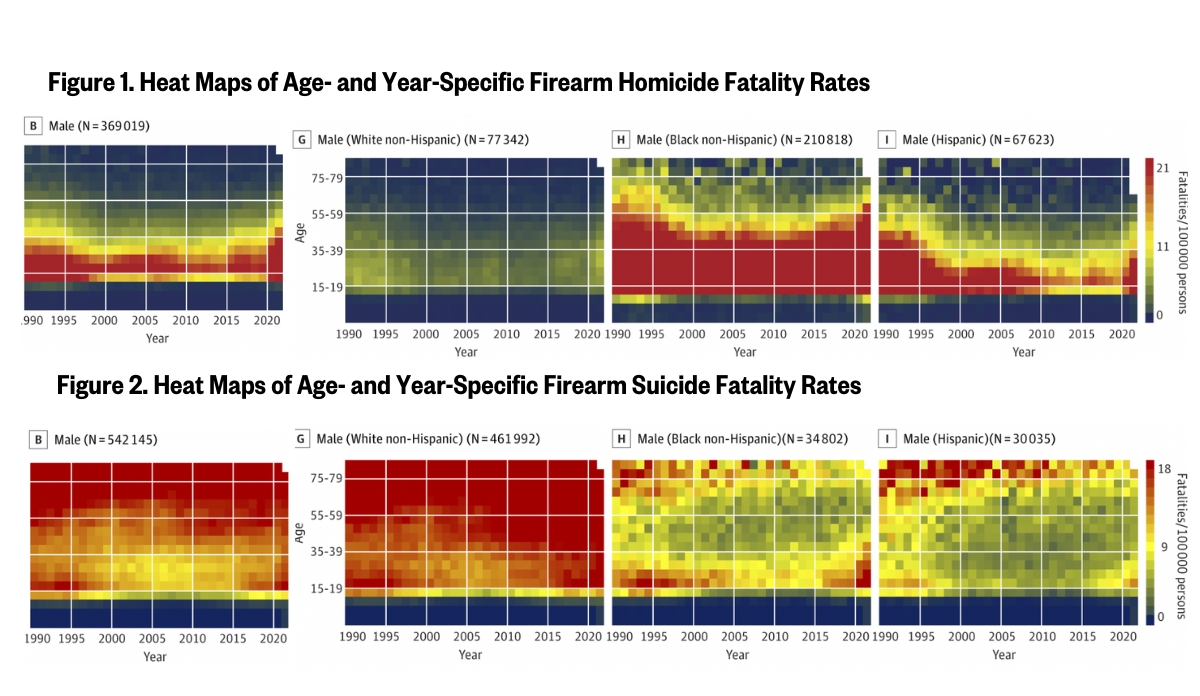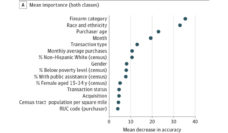In recent years, more than 40,000 people have died annually from firearms in the United States. Unfortunately, 2023 is no different, with more than 15,000 firearm-related deaths since January.
Mass shootings, such as those in Monterey Park or Nashville, generate swarming media attention, but the majority of gun violence in the U.S. involves homicide and suicide. To understand how firearm fatality rates have changed over time, Chris Rees and colleagues compiled data from the CDC.
The heat maps above use a coloring scale to denote intensity of killings: blue indicates lower fatality rates, and red indicates higher. The authors found that more than a million firearm fatalities occurred across the study period.
All-intents (both homicide and suicide) fatality rates decreased from 14.9 per 100,000 people to 10.1 during the period 1990-2004 but began increasing again in 2005 until they reached a high of 14.7 in 2021.
As Figures 1B and 2B show, males had higher fatality rates for homicides and suicides separately, with persistently high rates in males aged 20-39 and 70+ years. The authors report differences by race, possibly reflecting the impact of structural racism: homicides occurred most in black men aged 20-40 years, and suicides occurred most in white men aged 70+ years.
Unexpectedly, there has also been an increase in firearm-related suicides among females.
These concerning trends demonstrate the continuing need for a mixture of interventions to reduce firearm fatalities, including state-level legislation like comprehensive background checks, as well community-based programs such as firearm buybacks and public health driven suicide prevention intervention.
Databyte via Chris A. Rees, Michael C. Monuteaux, Isabella Steidley, et al. Trends and Disparities in Firearm Fatalities in the United States, 1990-2021. JAMA Network Open, 2022.














